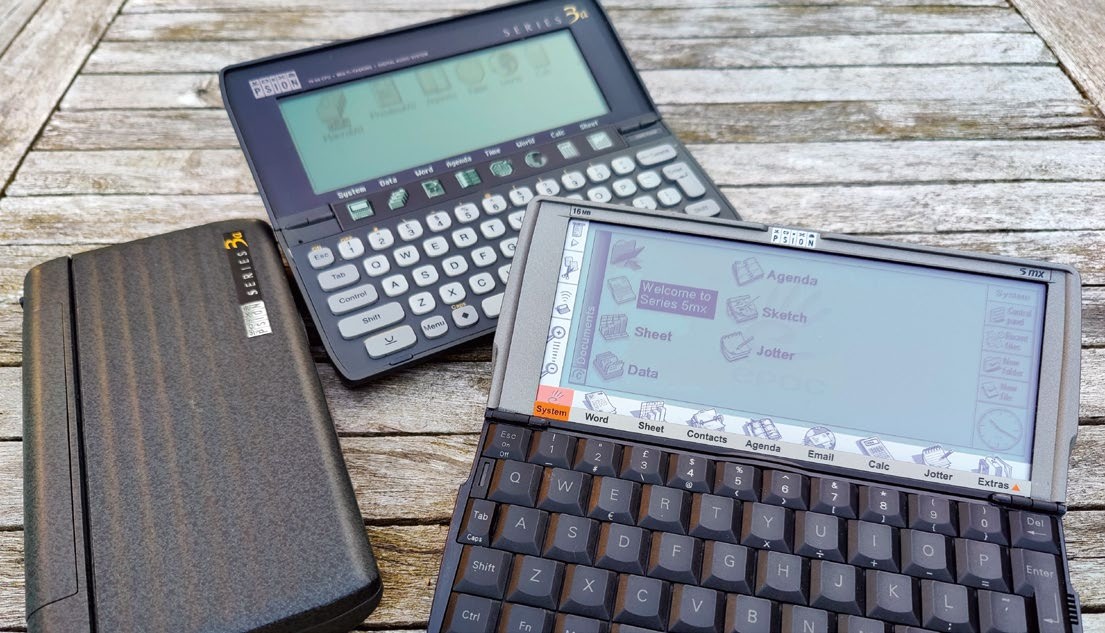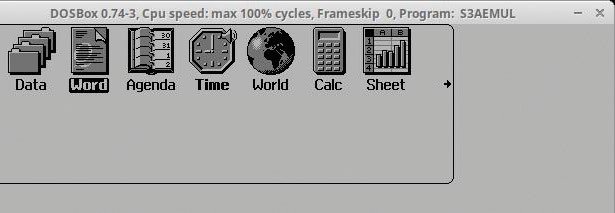OUR EXPERT
Les Pounder
is associate editor at Tom’s Hardware and a freelance maker. He blogs about hacks and makes at https://bigl.es/.
OUR EXPERT
Les Pounder is associate editor at Tom’s Hardware and a freelance maker. He blogs about hacks and makes at https://bigl.es/.

The Psion series has a classic design aesthetic that is still coveted to this day. The clamshell protects the screen and hides a stunning keyboard.
High school in the ’90s is where we saw our first Psion PDA (personal digital assistant) that we knew was a Psion. A classmate brought in a Psion 3a with a series of solid-state disks (yes, SSDs!) that had games and programs on. We forgot all about art theory and just delved into the wondrous world of the Psion. We never truly owned a Psion – the nearest we came was owning a Psion 5mx for two weeks before the flat flex display cable broke – but we loved the Psion hardware, which brought a decent keyboard to the PDA form factor.
Psion began life in 1980 as a software house with close ties to Sinclair Research (which explains why we saw so many Psion games on the Sinclair machines). The name Psion, an acronym, actually stands for Potter Scientific Instruments. The ON is due to PSI already being an acronym, and company founder David Potter claims that it also stands for Or Nothing. Making Psion mean Potter Scientific Instruments Or Nothing, a testament to Potter’s determination and ambition.

The Psion Series 3 menu brings back a lot of memories. A simple, clear user interface that gets the job done.
CREDIT: Kian Ryan –
www.kianryan.co.uk
QUICK TIP
The code used in this tutorial, along with extra images, can be found in our GitHub repository: https://github.com/lesp/LXF-Psion-Emulation/archive/refs/heads/main.zip
QUICK TIP
The code used in this tutorial, along with extra images, can be found in our GitHub repository: https://github.com/lesp/LXF-Psion-Emulation/archive/refs/heads/main.zip
Psion’s hardware story starts with the Psion Organiser in 1984. Looking like a chunky calculator, the Psion Organiser I had an unusual alphabetical keyboard layout and a single-line LCD screen. The screen was changed to a two-line model with the Organiser II, but the keyboard remained the same. These machines were loved in industry, including retail, with UK chain Marks and Spencer using custom branded models in its stores. Even the UK government’s welfare system used them for benefit calculations.
These early devices paved the way for the clamshell Psion Series 3 machines. Looking like a PDA, these devices were full-blown computers with their own programming language (OPL, introduced with the earlier Psion organisers) and a plethora of applications accessible via on-screen icons.
The Psion 3 series spawned the 3a, 3c and the 3mx. Each model improved on the original design with a bigger screen, faster CPU and more RAM. Each of these models shared the same clamshell design and a decent QWERTY keyboard, but it was the Psion 5 series that introduced the best keyboard of all.
The Psion 5 series was the last hurrah of the clamshell form factor and – wow! – what a send-off. With a sliding keyboard that felt great to type on, the Series 5 and the 5mx were powerful tools. Processor speeds were bumped up (to 36.864MHz) and RAM was increased, starting with 4MB on the Series 5 and reaching 32MB with the 5mx Pro. The screen size saw a slight boost, but it is the resolution that saw the biggest increase. We now had a 5.6 inch 640x240pixel screen, which proved to be usable while commuting and still ran from two AA batteries.
The Psion range ended with the Psion netBook. Yes, Psion made a netbook before everyone else did in the late 2000s. Running the Symbian EPOC Release 5, this device proudly carried the Psion legacy into the 2000s. Boasting a 7.7 inch, 640x480 256-colour LCD, 32MB of RAM and a 191.7MHz CPU, this was a much larger device. Measuring 23.5x18.2x3.7cm, this Psion was no longer a pocket computer. It did have a claimed 12 hours of power via an internal Li-ion battery. We had the opportunity to use one once at Blackpool Linux User Group, and it was a great experience, but we yearned for the pocketable form factor of the Series 3 and 5.
We digress. Here is where we leave the history lesson and instead learn first-hand about the original of the Psion range, the Psion 3a.
Emulating a Psion